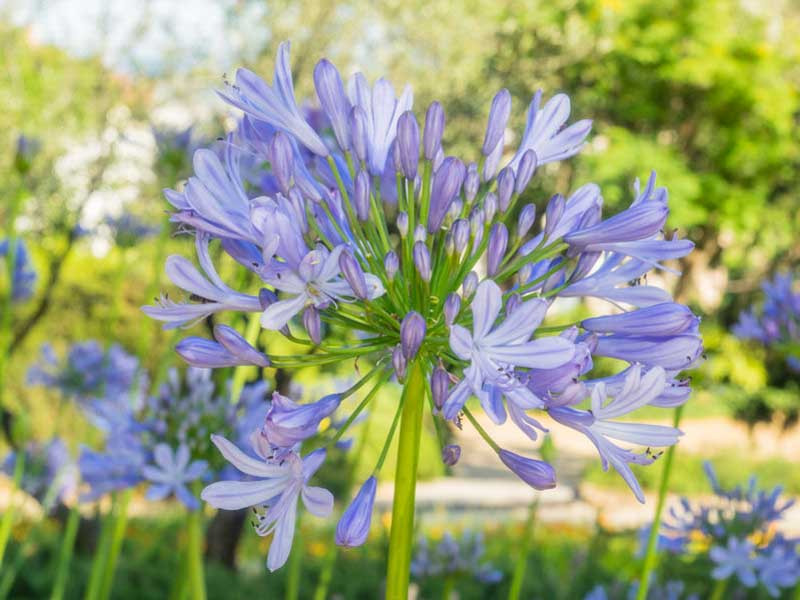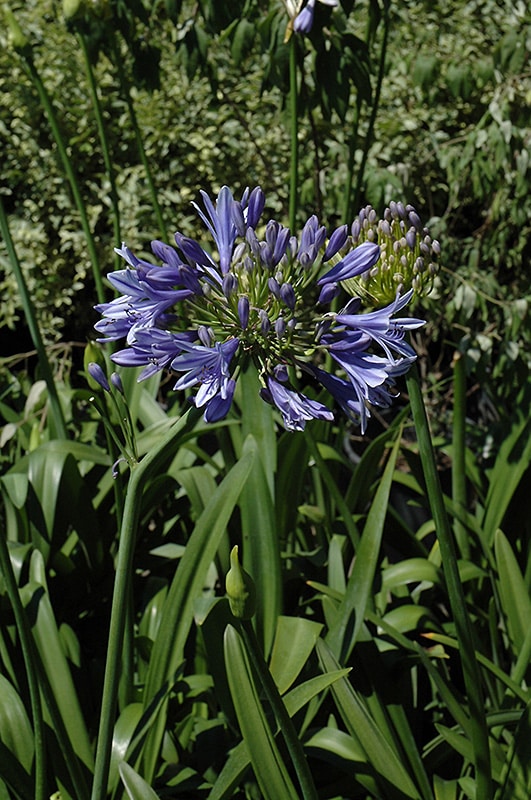Agapanthus Care Tips for Lush and Vibrant Flowers
Agapanthus Care Tips for Lush and Vibrant Flowers
Blog Article
Letting Loose the Secret to Effective Agapanthus Growing: Tips and Techniques for a Flourishing Yard
In the world of gardening, cultivating agapanthus efficiently requires a critical technique that includes numerous aspects of plant care. With mindful interest to detail, one can open the tricks to supporting these magnificent blooms, bring about a garden that grows with beauty and vibrancy. By recognizing the subtleties of agapanthus farming, one can produce an environment where these plants thrive and grow abundantly. In the following discussion, we will discover important suggestions and tricks that will guide you towards a flourishing agapanthus yard, offering insights into ideal techniques, soil problems, sprinkling methods, and a lot more.
Planting Agapanthus: Best Practices
When planting Agapanthus, appropriate soil prep work is necessary for making sure successful growth and growth of these stunning blossoms. Agapanthus, frequently known as Lily of the Nile or African lily, flourishes in well-draining soil with a slightly acidic to neutral pH degree - Agapanthus. Before growing, it is essential to modify heavy clay dirts with raw material such as compost or peat moss to enhance drain and provide essential nutrients for the plants
To plant Agapanthus, choose an area that obtains full sunshine to partial color, as this will certainly advertise healthy growth and bountiful flowering. Dig a hole two times the size of the plant's origin sphere and place the Agapanthus at the exact same deepness it was formerly growing. Delicately backfill the opening with soil, weighing down firmly to eliminate any type of air pockets around the roots.
Water the newly planted Agapanthus thoroughly and remain to keep the dirt evenly damp, particularly throughout the plant's energetic expanding season. Agapanthus. Applying a well balanced plant food once a month can even more support the plant's growth and blooming. By complying with these best methods for planting Agapanthus, you can develop a magnificent display screen of these fascinating blossoms in your yard
Suitable Dirt Conditions for Agapanthus
For optimum growth and blooming success of Agapanthus plants, making sure the soil problems are ideal is essential. Agapanthus likes soil that is rich in nutrients, so incorporating a well balanced fertilizer during the expanding season can promote healthy development and vivid blossoms.

Watering and Feeding Tips
To ensure healthy growth and dynamic blooms, correct watering and feeding methods are vital for effective Agapanthus cultivation. Agapanthus plants gain from normal watering, specifically during the growing season. It is recommended to water deeply when a week, making certain the soil is moist but not saturated. During heat or in pots, even more constant watering may be needed to avoid the dirt from drying out totally.
When it comes to fertilizing Agapanthus, a well balanced fertilizer with equivalent parts nitrogen, phosphorus, and potassium can be applied in the springtime to advertise healthy development and blooming. Slow-release fertilizers are ideal for offering nutrients gradually over a prolonged duration. Stay clear of over-fertilizing, as this can result in too much foliage development at the cost of blooms.
In addition, integrating organic issue like compost right into the dirt can boost nutrient levels and enhance soil structure, aiding in the general health of the Agapanthus plants. By complying with these watering and fertilizing pointers, gardeners can guarantee their Agapanthus plants flourish and generate sensational displays of flowers.
Pruning and Deadheading Methods
Proper pruning and deadheading methods play an essential function in keeping the health and appearances of Agapanthus plants, complementing the necessary techniques of watering and fertilizing for successful growing. Pruning Agapanthus involves getting rid of spent blossom heads, dead or yellowing leaves, and general shaping of the plant to advertise much better growth. Deadheading, the see this here procedure of eliminating discolored blossoms, not just improves the plant's appearance however also encourages further flowering.
When deadheading Agapanthus, it is advisable to clip off the blossom stem at the base making use of sharp, clean shears. This process reroutes the plant's energy from seed manufacturing back into origin and foliage growth, promoting a much healthier and a lot more robust plant. Regular deadheading can expand the blooming period of Agapanthus and protect against self-seeding, which can cause overcrowding.
In terms of pruning, Agapanthus generally take advantage of a light trim after blooming to clean up the plant and urge fresh growth. Cutting down the invested blossom stems and removing any dead or broken vegetation aids preserve the plant's vigor and overall appearance. Nonetheless, it is important to avoid cutting right into the crown of the plant, as this can damage its wellness.

Protecting Agapanthus From Pests and Diseases
Executing effective insect and disease monitoring techniques is vital to protecting the health and vigor of Agapanthus plants in cultivation. Agapanthus are normally hardy plants, but they can still fall explanation target to different insects and conditions otherwise correctly taken care of. One common parasite that impacts Agapanthus is my review here the Agapanthus borer, a caterpillar that tunnels into the plant, triggering damages to the blossoms and leaves. To stop invasions, normal examination of the plants is essential. If borers are identified, they can be manually eliminated, or insecticidal soap can be made use of as a control measure.
Along with insects, Agapanthus are susceptible to illness such as root rot and fungal fallen leave places. These problems can usually be avoided by guaranteeing proper drain and preventing overwatering. If indicators of disease show up, impacted components of the plant must be promptly eliminated to avoid further spread. Fungicides might additionally be made use of as a therapy action, adhering to the manufacturer's directions thoroughly. By staying attentive and addressing insect and condition concerns without delay, garden enthusiasts can aid their Agapanthus thrive and flourish.

Conclusion
To conclude, successful growing of agapanthus requires appropriate growing techniques, optimal soil problems, appropriate watering and feeding, routine trimming and deadheading, and defense from bugs and diseases. By following these tricks and ideas, gardeners can ensure a growing yard filled up with lovely agapanthus blossoms. Agapanthus. Remember to keep regular care and interest to detail to advertise the health and long life of these magnificent plants
When planting Agapanthus, appropriate dirt preparation is essential for ensuring successful growth and advancement of these gorgeous flowers.Water the freshly grown Agapanthus completely and continue to keep the soil evenly damp, especially throughout the plant's energetic expanding season.For optimum growth and flowering success of Agapanthus plants, guaranteeing the dirt problems are suitable is crucial. When transplanting or planting Agapanthus, make certain the soil is well-prepared to give the needed structure for the plants to establish themselves successfully. One usual insect that affects Agapanthus is the Agapanthus borer, a caterpillar that passages into the plant, causing damages to the blossoms and fallen leaves.
Report this page